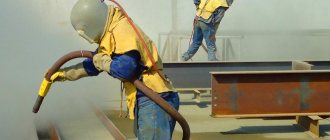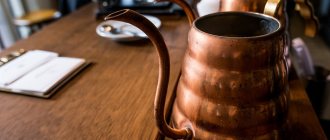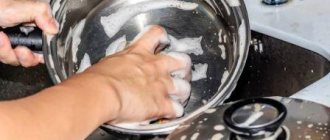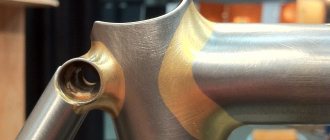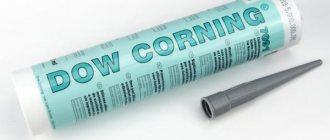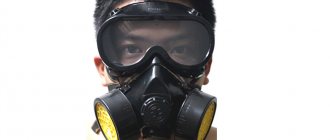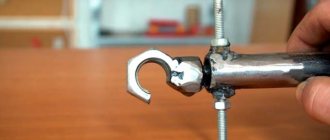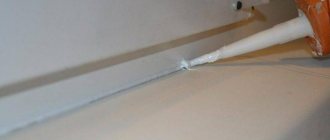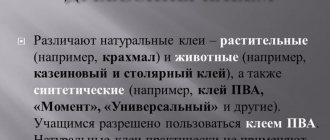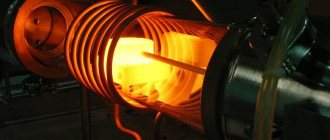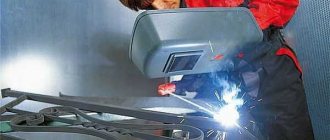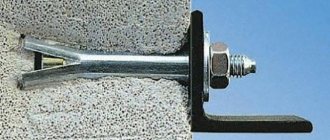Every numismatist has faced the need to clean coins. Coins may contain not only patina, but also particles of dirt, dust and plaque of any color, which is firmly ingrained into the metal. And since many old coins from the Soviet era were made from a certain metal alloy, collectors will definitely need information about how to clean aluminum bronze coins.
Aluminum bronze coins before and after cleaning
A patina or patina on coins develops over time as metal alloys tend to oxidize. Aluminum also has a similar property - to form a film of a grayish tint on the surface of the alloy. But the depth of formation of such a film is small; it can be easily cleaned off at home.
Cleaning Rules
Any impact - chemical, mechanical, electrochemical - changes the state of the artifact, sometimes causing irreversible consequences.
Cleansing is a painstaking task
Therefore, before you start cleaning old coins, you should familiarize yourself with the rules:
- First, it is determined whether the item needs cleaning. It is better to immediately put ancient specimens whose metal core is damaged into plastic capsules or an album.
- Work begins when stains and plaque clearly appear on the surface; dirt obscures the image and threatens the fortune of the ruble.
- When choosing a means and processing methods, they look at the metal from which the money is minted.
- You should not try to scrub the surface until it shines: not every banknote can withstand such intense load, and shiny change often looks like a tasteless fake.
- Do not use a needle or awl to roughly pick off dirt in hard-to-reach areas of the field.
- Money should not be cleaned with abrasive powders or aggressive solutions (hydrochloric or nitric acid).
If a novice numismatist does not understand cleaning techniques, it is worth listening to the wise advice of experienced collectors.
Rusty growths are removed from valuable samples without touching the metal
How to clean coins at home
Before placing a new artifact into the collection, careful processing is carried out. At home, available substances or special means are used to clean collectible coins.
Soap
Sometimes traces of oxidation on new rubles can be removed with a soap solution. The foamy liquid acts gently and helps to easily wash off dirt without leaving scratches. The duration of the procedure depends on the level of contamination of the item and the type of detergent:
- Neutral baby soap containing boric acid and lanolin is grated. The money is immersed in a warm creamy liquid for 7 or more days (periodically taken out, inspected, and the loose layers of oxides are washed off).
- Laundry soap shavings are poured with boiling water, stirring constantly to form a jelly-like mass. In such an environment, coins are kept for up to two days.
Cleaned rubles are washed and wiped. If you cannot clean the old coin the first time, repeat the operation.
Reference! Sometimes during excavations, numismatists find handfuls of stuck together pennies. This is caused by the accretion of oxides. To separate the specimens, the lump of money is poured with a caustic alkali solution heated to 50℃ (5 - 10%). After treatment with sodium hydroxide, the artifacts are easily separated from each other.
After cleaning with soap, the pennies will shine
Soda and soap mixture
Dissolved baking soda is added to the soap solution to enhance the effectiveness of the method. Cleaned products are wiped with a swab moistened with alcohol and lubricated with Vaseline.
Toothpaste and vinegar
Lightly soiled specimens are soaked for 1.5 - 2 hours in acetic acid, then wiped with aluminum foil. The final stage is washing with water and drying with a soft cloth.
To enhance the effectiveness of the method and clean it until it shines, the money is first soaked in table vinegar (6%). After 5 minutes, apply toothpaste to the surface with a soft brush and carefully remove traces of rust. At the end of the procedure, the specimens are rinsed and thoroughly blotted with a rag.
Lemon acid
Add citric acid to boiling water (20 g of powder per 0.5 l). Stir thoroughly and cool slightly. The warm acidic solution is poured into a ceramic or glass container. The darkened fines are immersed in liquid. After 20 minutes, the coins are washed and wiped dry. Sometimes the powdered substance is replaced with fresh lemon juice (instead of one tablespoon of freshly squeezed juice, take a mixture of 1 tablespoon of water and 0.5 teaspoon of powder).
Acid quickly eats away dirt
Coca Cola
Fans of original methods advise cleaning coins from dust and rust with Coca-Cola: phosphoric acid contained in soda quickly corrodes dirt. The drink is poured into the fines and left for a week (the liquid is shaken periodically). To speed up soaking, place the container next to a source of constant heat. After 7 days, the plaque is easily removed with a foam sponge, the products are rinsed and dried with a soft cloth.
Oil boiling
This cleaning method is chosen for products made of alloys; silver rubles cannot be cleaned this way. Pour 50 ml of vegetable or vaseline oil into a glass container and place in a water bath. Place small change in the heated liquid for 15 minutes. After the procedure, the money is left in hot oil until it cools. Then rinse thoroughly and boil in clean water. At the end of the treatment, wipe with a cotton pad moistened with ethyl alcohol and wipe.
Digestion
The money boils for 5 – 7 minutes. After peeling off the growths, the pennies are washed with soap suds, rinsed, and blotted with a towel.
Additional Information! For boiling, it is convenient to use a plastic mesh bucket with a handle. The money is placed in such a container and immersed in boiling liquid or oil. The handle is periodically lifted and lowered, and at the end of the procedure it is taken out of the container.
Boiling in oil removes plaque easily
How to clean a coin using electrolysis
Electrochemical cleaning helps restore lost gloss to coins. Under the influence of electric current, contaminants are broken down and areas damaged by rust are restored. To apply the method, prepare a power supply (power from 6 to 12 V) with universal clamps. To carry out an oxidation-reduction reaction, the sequence of actions is strictly followed:
- A saline solution is poured into a glass container (0.5 tablespoon per 0.5 liter of water).
- One clamp, marked with a “-” sign, is attached to a metal object (not made of copper or alloys containing copper), the second (with a “+” sign) is attached to a contaminated artifact.
- The items are placed in the prepared container.
- Plug in the device and observe: if connected correctly, bubbles will appear on the penny being cleaned while working.
- Dissolved corrosion products are periodically removed and the restoration of damaged areas is observed through a magnifying glass.
- The device is turned off when the dirt dissolves and the liquid becomes cloudy (the duration of treatment depends on the degree of contamination of the item).
- The processed products are taken out.
After cleaning, ancient coins are thoroughly washed with hot water and blotted with a towel.
Electrolysis is an effective cleaning method
Reference! To avoid damage to rare examples of the collection, this technique should first be tested on less valuable signs.
Ammonia
Ammonia cleans aluminum bronze from pinkish stains, and silver and copper from dark brown, purple and green deposits. Work with ammonia in a ventilated area. Objects made of copper or precious metals are dipped in ammonia (10%). After the procedure, the fines are not immediately removed from the solution, but water is gradually added in small doses to reduce the alcohol concentration. Then the artifacts are thoroughly rinsed and dried.
Sometimes a mixture containing ammonia is prepared to clean alloys. Soda is combined with toothpaste, ammonia is added to create a paste similar to sour cream. The fines are carefully rubbed with the product. Then the composition is washed off. Precious metal cannot be cleaned using this method.
How to clean coins mechanically
Mechanical processing is approached with caution. Experienced numismatists are against rough “cleaning with felt boots” (this is what they say about wiping away dirt with a piece of thick carpet or a hard rag); such a technique is considered barbaric. You should not treat a metal surface with GOI paste: the hard, dense substance worsens the condition of the coating. You cannot use a nail, an awl or a knitting needle to remove rust from hard-to-reach grooves: sometimes defects appear on the surface cleaned with sharp objects - gouges, chips, scratches. Changes in relief worsen the appearance of banknotes.
The coating is carefully wiped with a cotton swab.
Adhered dirt and traces of corrosion are removed only after soaking in soapy foam. The layers are carefully removed from valuable specimens with a wooden spatula or toothpick. Less rare and modern examples of the collection are carefully cleaned with an old toothbrush.
A numismatic brush with thin brass bristles gently cleans without damaging the metal coating. With smooth movements directed in one direction, the plaque is easily removed, the relief and field are brightened. They sell models with two types of bristles - soft and hard, as well as magnifying glasses and tape measures. These devices are convenient to take on a hike or use at home. A multifunctional brush helps determine the level of contamination and the size of build-ups. The result of gentle cleaning is examined through a magnifying glass.
Plaque on bronze and means to combat it
Over thousands of years of using bronze objects and parts, people have tried many ways to clean bronze. Both compositions of mineral origin, plant origin and even food products were used. Of the dozens of methods, not all are suitable for use at home.
How to clean bronze using affordable means
For this you may find it useful:
- lemon juice;
- baking soda (chemical name: sodium bicarbonate);
- plain flour;
- vinegar 9% (not to be confused with vinegar essence);
- ammonia (10% aqueous solution, purchased at a pharmacy);
- aqueous solution of oxalic acid;
- finely ground chicory;
- aqueous solution of sulfuric acid;
- school chalk;
- wood sawdust.
To work you will need:
- cotton rags;
- cloth;
- wipes for drying the surface;
- stainless steel container for mixing and heating the components of the cleaning composition.
Many compounds used to clean bronze objects are chemically active and can seriously damage the skin or mucous membranes. Therefore, when working it is necessary to use personal protective equipment:
- gloves;
- apron;
- glasses or clear face shield;
- Tight clothing, shoes and hats to prevent contact of active substances with the skin or mucous membranes.
Removing plaque from bronze at home
After cleaning an item using any method, you should rinse it with water to remove any remaining composition and be sure to dry it thoroughly. Wet bronze objects become coated several times faster than dry ones.
Important! It is impossible to clean plaque on bronze once and for all. The treatment will have to be repeated periodically.
Cleaning with special means
Noble metals and alloys are treated with special cleaning compounds.
Additional Information! Special agents are diluted according to instructions. The artifacts are periodically turned over to ensure uniform coverage of the liquid. To enhance the effect of the drugs and speed up cleaning, coins are first degreased or washed in soap suds.
Effective means for processing metal money. The
following preparations will quickly destroy traces of oxidation, corrosion, and wash away dirt, without damaging the material:
- Trilon-B cleans brass, nickel silver, cupronickel from rust without affecting the metal; returns the original color to products with minimal damage; Coppers after cleaning get a pinkish tint.
- Silbo – liquid for copper and nickel money; removes plaque and rust.
- Asidol-M – contains ammonia, surfactants, wax; Cleans and polishes banknotes made of steel and non-ferrous alloys in a couple of minutes.
- Shine Coins - under this brand, separate compositions are produced for products made of silver, copper, nickel, bronze and brass.
- Nanopatina is a means for processing copper. Contains copper sulfate, active ingredients. Apply to a degreased and washed surface. After the procedure, air dry for 5 minutes, then wash.
- The paste-like preparation “USSR” based on nanodispersed abrasive contains tartaric acid salts and sodium bicarbonate. Cleans copper, bronze, brass.
- Leuchtturm - a series of liquids for products made of gold, silver, copper; preparations contain different doses of inorganic acidic substances, sulfur compounds, softeners, nychtinol (<5%); restores color and does not add unnatural gloss.
- Ointments, powdery substances, liquids from the Etalon series (“Gold”, “Silver”, “Copper”) remove traces of rust; restore the natural shine of metal coatings; form a protective layer - patina.
A universal preparation for cleaning metals and alloys,
Nanotrilan paste contains oxalic acid and microdispersed abrasive substances. Suitable for cleaning USSR money, new 10-ruble and foreign banknotes. Apply to the contaminated surface and gently rub with flannel.
Preventive measures
Cleaning the patina is not enough. To slow down the oxidation processes of bronze after cleaning:
- Rub with wax or paraffin until shiny. These substances leave an invisible film on the surface, which prevents the interaction of metal ions with air oxygen and water vapor.
- Coins are coated with sulfur ointment, which forms a black patina on the surface and prevents oxidation of the surface.
- Particularly valuable ones are placed separately in a piece of velor or suede and placed next to a bag of silica gel to absorb excess moisture.
- Regular cleaning with a flannel cloth reduces the likelihood of patina.
- Small products are periodically cleaned, preventing the appearance of large stains and rust, by dipping them in a soap solution consisting of grated laundry soap and water for 1-3 days, then cleaned with a soft brush. Rinse with water and wipe dry.
Having bronze objects in your home is an expensive pleasure, since they require constant care, but at the same time, the status of the owner as a connoisseur of antiquities and a person of taste increases. If treated with care and properly stored, bronze accessories will last a long time and will provide aesthetic pleasure.
How do you like the article?
How to remove rust
Acids are used against corrosive growths - hydrochloric, formic, sulfuric. Aggressive compounds are diluted with water, and the condition of the coin is constantly monitored in order to stop the session in time. After peeling off the dirty layers, the active ingredient is neutralized with soda or soap. At home, a thin layer of rust is removed using available means - Coca-Cola, kefir: these drinks also contain acid (phosphoric acid, lactic acid, respectively). The specimen is kept in an acidic product, turning over periodically. When the rusty layers begin to peel off, the procedure is interrupted. Dirt is removed with a soft brush.
How to clean old coins
Cleaning old coins is done with caution. Old Russian rubles are cleaned when layers of oxides have accumulated on the surface. Such contamination distorts the image of the object, and sometimes causes irreversible damage. The ancient metal that made up the core could have completely oxidized and turned into a rusty crust. If you try to remove this rust, you may lose the artifact.
Antique money needs gentle handling
A brownish-greenish coating is formed due to environmental influences. The noble patina emphasizes the authenticity of the rare specimen. If you peel off this even layer and give the change a dazzling shine, the old samples will seem fake. Imperial pennies are carefully washed in warm soapy foam, rinsed, wiped dry and put into plastic capsules. If the metal core is not damaged, the products can be safely cleaned with special products.
Causes of plaque
The new bronze product has a characteristic golden-brown hue. But gradually this noble color fades, changing to a darker color, and in places becoming covered with a black coating. This occurs as a result of the reaction of metal ions with air molecules and the formation of oxides on the surface of the alloy. The surface film, consisting of copper oxide (CuO) and protecting bronze from further oxidation and corrosion, is called black and noble patina. They prefer not to remove it, believing that such a coating adds mystery, antiquity, and grace to the products.
Another type of patina is green, called wild and causes the destruction of antiques. Appears as a result of prolonged exposure of bronze to a damp room. Hydrogen sulfide and ammonia, which are present in humid air, contribute to the formation of emerald-colored sulfates on the surface of the product. The green coating penetrates deeper and deeper into the composition, causing destructive damage to the object. This type of plaque can be combated using various means, including home remedies.
The better way to clean the money of the Soviet Union
Coins issued in the USSR from metal begin to be cleaned if the images have lost their clarity, but stains and dirt have become clearly visible. Banknotes were minted from nickel (1 ruble and 10 - 50 kopecks) or copper-zinc alloy (1 - 5 kopecks). Soviet money is reanimated by the following means:
- soap suds;
- ammonia;
- toothpaste;
- Coca-Cola;
- a weak solution of formic, citric or acetic acid.
Light-colored coins remove light contamination from the warm liquid in which the eggs were boiled.
Toothpaste gently removes plaque
To restore its natural appearance, the money is dipped in diluted hyposulfite (10%) for 10 minutes. The fines should not be heated too much or cleaned with aggressive substances: rough influence easily damages the field and erases the embossing relief.
Useful tips
- Sometimes, during the cleaning process, ancient bronze coins lose their noble patina, for which many collectors are even willing to pay extra. Therefore, “traditional craftsmen” have contrived to apply patina on their own - to do this, just place the money in a 10% hyposulfite solution for 10 minutes. This coating looks quite attractive and also protects the coin disk from corrosion.
- Avoid using brushes with metal bristles, which can damage the surface of the coin and ruin its appearance.
- GOI paste is the worst solution for cleaning coins using improvised materials. It ruins the fine details on the coin and damages the patina.
- Do not use aggressive acids when cleaning - they may destroy the coin.
How to clean coins depending on alloy
The material from which metal banknotes are made, as well as the level of contamination, influence the choice of cleaning method.
Gold
Due to its strong softness, the material requires careful handling and quick, gentle processing. High-grade gold, from which ancient money was minted, does not oxidize. Later samples were created from alloys containing various impurities. This explains the appearance of plaque on the surface and color change. Gold coins that have not been in contact with the ground are first cleaned of dust.
Inert metal oxidizes weakly
The following cleaning techniques are common:
- first, the rubles are soaked for 3–7 days in distilled water, then treated with laundry soap (sometimes dipped in a jelly-like soap mass for 24–48 hours);
- immersed in a solution of formic or citric acid (5 - 10%);
- grease stains are carefully removed with a cotton pad soaked in acetone;
- soak in clean water for 2 – 5 days, then transfer to ammonia (10%) for 15 minutes;
- combine 500 ml of water, 1 table. l. ammonia, 60 ml hydrogen peroxide (3%); the money is left in the prepared composition for 10 minutes;
- the signs are placed in sweet (salty) water for 4 - 8 hours (for 0.25 liters - 1 teaspoon of salt or sugar);
- soak for 1 – 3 hours in a soda solution (take 1 teaspoon of soda per glass of boiling water, stir thoroughly until the powder dissolves).
The treated signs are rinsed thoroughly and covered with a soft cloth so that any remaining moisture is absorbed (do not rub or press).
Reference! To clean precious metals, you cannot use abrasive cleaning powders: hard grains scratch the coating and leave a cloudy coating.
This is what a gold coin looks like after cleaning
Silver
When working with silver, be careful: the soft noble metal is easily damaged. Therefore, silver objects should not be harshly rubbed or treated with abrasive substances. The following methods are used for processing:
- First, they are immersed in a non-concentrated acidic solution for 10–15 minutes, then kept in a soda solution for 5–7 minutes. Traces of reagents are thoroughly washed off, otherwise white streaks will remain.
- To remove green copper compounds from a silver surface, the ruble is placed in a porcelain or glass bowl and filled with formic or sulfuric acid (5%). If the preparations are gradually heated to 55 - 70℃, periodically removing and washing the money under the tap, the procedure can be speeded up. At the end of the operation, softened copper salts are removed with a soft brush.
- Purple-gray horny silver stains are softened in diluted ammonia (5%). They are immersed in a caustic liquid, after 10 - 20 minutes they begin to add water to the container to reduce the concentration of the composition. When the volume of water exceeds the volume of alcohol, the money is taken out and the layers are removed with a soft sponge. After rinsing, dry thoroughly.
Thin growths are washed with a mixture of ammonia, soda and tooth powder. Low grade signs are treated with Trilon-B (dissolved according to instructions).
Silver is washed in a weak acid solution
Bimetal
Bimetallic rubles are minted from two metals: the center is made of silver or steel, the edging is made of copper or gold. Numismatists often clean such items with soap. At home, universal means help to clean money from bimetal:
- formic acid - a five-minute immersion in the solution returns the lost radiance;
- Dishwashing concentrate (0.5 tablespoon per 0.5 liter of warm water) - carefully spread the foam over the surface with a foam sponge;
- Coca-Cola - the products are left in the carbonated drink for 10 - 12 hours; then washed and dried;
- toothpaste - the gel is first rubbed over the contaminated surface with a brush, then removed.
These gentle techniques do not damage the coating and help remove dirt, but sometimes the procedure must be repeated to achieve the effect.
Additional Information! To process bimetallic alloys, use reagents that are safe for both components.
Bronze
The alloy contains copper, tin and manganese, aluminum, zinc, nickel. Darkened bronze money is boiled in oil for 5 - 7 minutes or cleaned with available means that are safe for copper:
- toothpaste;
- Coca-Cola;
- a mixture of salt and table vinegar;
- ammonia.
Ammonia causes bronze to darken to deep brown or black tones. To restore the lost gloss, rub the money with toothpaste and then rinse it. Dry with a soft cloth.
A mixture of salt and vinegar will remove plaque
If home recipes do not cope with the growths, it is worth diluting the drug Trilon-B. The bronze fines are left in the prepared composition until cleansed. The final stage of the operation is rinsing in cold water and drying.
Cupronickel
Cupronickel is a metal alloy based on copper. Contains additional components: nickel, zinc. Externally, the samples resemble silver ones. To clean coins from blackening, use:
- ammonia solution (lowered for 8 - 10 seconds);
- toothpaste;
- an aqueous mixture of chalk (per one glass of liquid - 120 g of substance), ammonia (60 g);
- Asidol remedy.
To remove dark streaks, the item is immersed in a warm mixture of baby soap and chalk (0.025 g of solid ingredients per 0.5 liter of liquid). A bath of a weak solution of table vinegar gets rid of growths.
Reference! To prepare working fluids, use distilled water, since tap water contains many impurities that impair the quality of solutions.
Zinc
To issue coins, brittle zinc was combined with hard materials - tin, copper, iron. To return the instances to their original appearance, use:
- ammonia;
- soap solution;
- citric acid;
- table vinegar (5%).
On the forums, numismatists advise cleaning zinc money from corrosion with Tsinkar paste for chrome-plated auto parts.
The pharmaceutical preparation washes off growths well
Zinc pennies are washed with diluted hydrochloric acid (solution concentration 0.5 - 1%). Keep in an acidic environment for 2–3 seconds, otherwise the material will be damaged. Then rinse quickly and dry just as quickly. This technique requires attentiveness and caution from the collector: increasing the concentration of liquid, increasing the duration of the procedure or contact with air will cause damage to the objects. If a collector doubts his abilities, it is better to clean coins with Leuchtturm special cleaner. This solution does not contain aggressive substances and easily removes zinc.
Nickel
Nickel specimens can be bleached with a mixture of acetic acid and salt. The components are combined in a glass container. Nickel money is dipped into the sour-salty liquid. The lightened surface is rubbed off with an eraser, rinsed and wiped with a soft cloth.
Useful to know, read: - What to do if a mercury thermometer at home breaks and mercury leaks out?
Palladium
This rare precious metal, part of the platinum group, is inert and does not react with acids and alkalis. Therefore, at home, palladium money is first washed with soap, then rinsed generously and wiped thoroughly.
Platinum
Platinum coins are examples of the original numismatic collection, which are used for investment purposes. In Russia, such money was in circulation in the 19th century, under Tsar Nicholas I. The dense material is resistant to corrosion and mechanical damage, so even old banknotes rarely need cleaning. Numismatists advise periodically wiping rubles with napkins to care for platinum jewelry.
Solid metal is well preserved
Copper
Before you clean a copper coin from dirt at home, look at the color of the coating formed on the surface:
- Dark green stains indicate that layers of copper carbonate have accumulated. Such traces are removed with citric acid: the diluted liquid slowly cleans the surface without damaging the metal.
- Red-cherry copper oxide marks are washed with ammonia solution (10 - 15%). A copper coin is coated with liquid. After breaking down the dirt, clean the surface with a brush.
- A pale yellow tint appears when money comes into contact with lead objects for a long time or when the metal alloy contains a large proportion of lead. To clean copper from yellowish streaks, use vinegar (10%): the acid quickly corrodes lead carbonate.
If after the procedure an unnatural gloss appears on the coating, a patina is created artificially. To prepare the working solution, mix in a glass (ceramic) container:
- 0.5 l of water;
- 2.5 g potassium permanganate;
- 25 g of copper sulfate.
Copper coins are immersed in liquid heated to 75 - 80℃. To form a light brown tint, objects are kept in the solution less than to obtain a dark tone.
Copper oxidizes easily
The following common means are used to clean coppers:
Ammonia and peroxide
Combine 60 ml of hydrogen peroxide, 2 teaspoons. l. ammonia. Add 400 ml of water. Money is dipped into the prepared liquid for 10–15 minutes. Then dry with flannel.
Dish cleaning powder
Thin deposits on well-preserved items are removed with dishwashing detergent (applied with light movements without rubbing). If the dense layer is not removed after moistening, the powder is left overnight.
Ash
The folk method helps to clean copper-nickel products. The stained coin is slightly moistened and covered with cigarette ash. After 15 minutes, the ashes are gently rubbed into the surface. Then rinse off and dry thoroughly.
After cleansing
After the procedure, the coins are boiled to completely remove dirt and cleaning agents. Then the money is dipped alternately in acetone and alcohol for 30 minutes to dry. A protective coating in the form of synthetic resins or paraffin is applied to dried surfaces. Preserved items are stored in plastic capsules or in separate compartments in collection albums.
Coins should not be touched with bare fingers. Money is taken with tweezers or numismatic gloves made of polyester or cotton are worn when working, otherwise fingerprints will appear on the surface. Later, these traces will darken and the value of the collection will decrease. Do not work with rubber gloves: rubber worsens the condition of alloys.
Collection samples are taken while wearing gloves.
Cleaning coins is a labor-intensive task, but every numismatist is pleased when the collection’s specimens look well-groomed. When cleaning rubles from oxidation and dirt, do not forget that the purity of the artifact and the preservation of the relief influence the collection value. Therefore, cleaning products and methods are chosen carefully so as not to damage the coating or smooth out parts.
